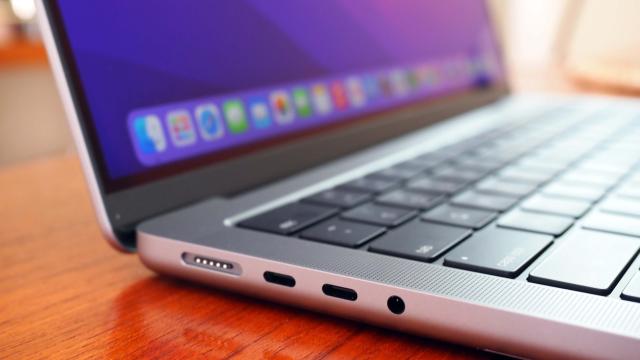Apple’s MacBooks haven’t changed much over the past decade or so. Some of the latest models were recently redesigned with modern features, but their form remains that of traditional laptops. That isn’t due to a lack of ideas. Between each model refresh is a flood of patents conjured up by Apple inventors who are probably locked somewhere deep in the bowels of the Cupertino spaceship.
Rarely do these ideas move from page to product, but they are still fun to investigate — if only to see what concepts Apple might explore deep into the future. On that note, Apple today was granted a patent that describes transforming the MacBook’s deck into a flexible input surface or a wireless charging pad for the iPhone.
Stay with me here. In this patent, Apple considers using transparent, dielectric materials such as plastic, glass, or ceramic material to form a continuous touch-sensitive input surface. It goes on to describe various ways this surface could be used to “improve the look and feel of the device without having the drawbacks of some traditional device constructions.”

One way is by replacing a traditional tactile keyboard with a fully digital one enabled by a glass touch-sensitive surface. You could even change the layout of the keyboard: a patent image shows it in an ergonomic layout (see above). I’m envisioning something similar to the Halo keyboard on the Lenovo Yoga Book C930. I cringe at the thought, and yet, Lenovo found a way to make an e-ink keyboard not suck. Check out what Gizmodo alum Sam Rutherford said about it:
“I’m not going to dance around it and say it’s perfect, it’s not. But in some ways, I prefer typing on the C930’s flat surface more than the super stiff and shallow keyboard you’d get on a MacBook.”
Another version imagines the keyboard with a flexible “fabric cover” made of watertight materials placed on top of a keyboard mechanism. The keys would still actuate when you pressed them and the membrane would allow for waterproofing and protecting the surface from “liquids, debris, or other contaminants.”
With a semi-modular palm rest, Apple figures you could keep the traditional keyboard in place and implant a wireless charging pad for juicing up an iPhone or AirPods. I do wonder if there is enough space for both your wrists and smartphone — the phone in the below image looks hilariously small, going from the bottom edge of the laptop only up to the keyboard. From what we’ve heard, Apple is done with the iPhone mini.

Having such a flexible surface also gives Apple the option to put biometric sensors like fingerprint readers into the palm rest instead of integrating them into the power button. The company also proposes adding various health sensors for tracking heart rate, blood oxygen levels, and temperature.

Now imagine the entire palm rest area acting as a graphics tablet. It could be fully customisable and adaptable based on the program you’re using. For example, opening Adobe Photoshop could convert the digital keyboard into a rotary dial with buttons for shortcuts to your most frequently used editing tools. It would have an enhanced palm rejection system and could detect how much pressure you’re applying similar to Apple’s Force Touch trackpads.
If this all sounds familiar, it’s because Apple filed three similar patents back in 2018. Even so, I’ve not convinced these features will ever make their way into a MacBook, especially with Apple slowly removing the divisive Touch Bar from its laptops (it is still alive on the MacBook Pro 13). Just never say never. These ideas could one day form the basis of an entirely new product or will be revised or scaled down before finding their way into existing devices.
